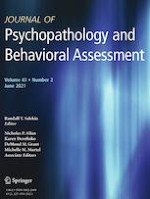15-09-2020
Evidence for a Higher-Order ESEM Structure of ADHD in a Sample of Chinese Children
Gepubliceerd in: Journal of Psychopathology and Behavioral Assessment | Uitgave 2/2021
Log in om toegang te krijgenAbstract
Exploratory structural equation modeling (ESEM) solutions have been proposed to represent the factor structures of attention-deficit/hyperactivity disorder (ADHD) in recent literature, yet no studies have assessed those structures in Chinese children. The primary aim of this study was to comprehensively examine the factor structures of the Chinese version of the ADHD Rating Scale-IV (ADHD RS-IV): Home Version. Data on 458 Chinese children aged 3–8 years (boys: 246; 54%) were used to test and compare eleven factor models: confirmatory factor analysis (CFA) models (one-factor, two-factor and three-factor), second-order CFA model, bifactor CFA models (two and three specific factors), ESEM models (two-factor and three-factor), second-order ESEM model, and bifactor ESEM models (two and three specific factors). The results showed that, overall, ESEM models displayed better fit than CFA models. Specifically, the second-order ESEM model with three first-order factors best represented of the ADHD factor structure in our sample. In addition, measurement invariance testing results showed that scalar invariance was established across gender, age and informant groups. Implications for future research are discussed.
